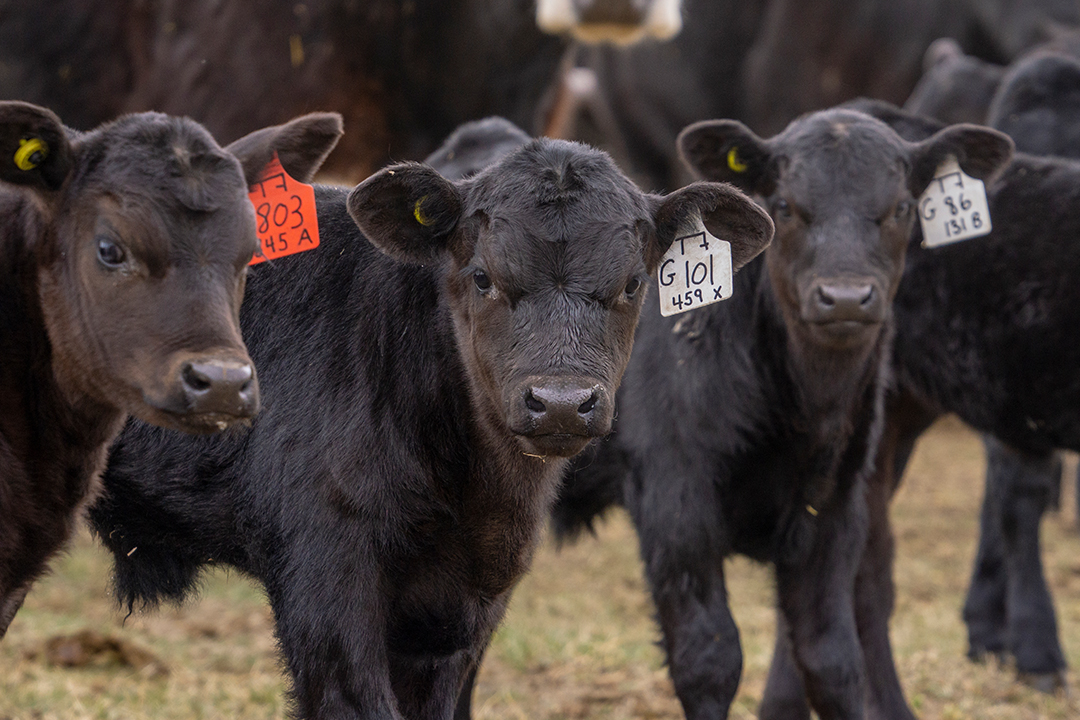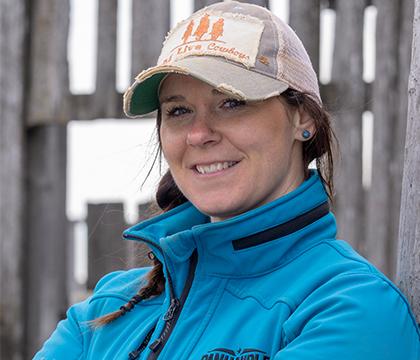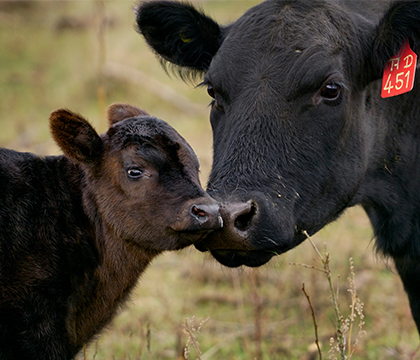
Successful calving seasons start with balanced nutrition
The 2019 calving season at the Livestock and Forage Centre of Excellence began long before the first calf hit the ground this spring.
By Lana Haight
“We had a really good spring with calving,” said Krystal Savenkoff, facilitator for the cow-calf and forage program at the LFCE.
“It was so exciting. In the first cycle, it was bang, bang, bang. By the time we got to the third cycle, we weren’t having to check for calves very often. With your calf crop, you always want them uniform. You can see a huge difference from your first cycle calves to your third cycle calves, just in pure production. You get more pounds per gain the older the calf.”
At Termuende Ranch, the first calf was born on March 22, a couple of weeks before the herd’s “due date” of April 7. Savenkoff says her experience suggests that it is not unusual for Black Angus cows to calve a week early. When calving got into full swing, more than 84 per cent of the cows calved in their first cycle. Having 270 out of 220 cows and 100 heifers calve in that one month kept the Termuende crew busier than usual.
“It’s what you’re aiming for. The more uniformity, the better.”
This was a banner year for Termuende after Savenkoff made some critical decisions months earlier in response to a lower-than-ideal conception rate the previous year.
“We monitor mineral intake. We feed test. We weigh our cows so we know their body condition score. We annually test water and pastures. We know what we are putting into our cows. And they are checked regularly by a veterinarian. We do everything by the book. So, when we should be having good conception rates and didn’t, I just thought that we could do better,” said Savenkoff referring to the 2018 calving season.

After talking to another producer in the Lanigan area, she decided to change the animals’ mineral regime. Starting in March of 2018, the animals at Termuende were provided chelated minerals in lick tubs that included molasses instead of loose mineral they were receiving. The molasses increased their mineral intake.
As a research facility, the cow herd is divided into different feeding trials.
“Their type of feed is always changing. Trying to correlate the type of feed to the reproductive results is hard. One year, those cows might be on swath grazing. One year, they might be on polycrops for part of the year. Another year, they might be on corn grazing.”
In addition to the variety of feeding regimes, the animals at Termuende are also drinking water that contain sulphates. Sulphates in drinking water are known to bind trace minerals, including copper, magnesium and zinc, resulting in those minerals passing through the body without being absorbed. The reproductive system may be negatively affected when those minerals aren’t available to be absorbed through the rumen. For example, Copper, magnesium and zinc are essential for cattle reproduction.
This summer, the cow herds at Termuende Ranch and Goodale Farm were combined. On June 26 and 27, they along with 22 bulls were divided up and were moved to five pasture locations. The higher numbers are needed at the LFCE because the cow-calf pairs and the heifers are often in small paddocks for various research trials.
“I like to have enough bull power to make sure everyone gets covered in the first cycle,” said Savenkoff.
She will pull one bull from a pasture after the first cycle because she wants to reduce the competition between the bulls on the second and third cycle when there are fewer females to breed.
Managing the cow herd from Goodale has worked slightly differently because so many of the females are in projects involving artificial insemination (AI) research versus natural breeding.
Of the 112 cows bred, 59 were by AI, and of the 39 heifers, 19 were by AI. The first calf was born on March 6 with the last one arriving on May 16.
This year, regardless of research trial, all the animals were fed chelated minerals in lick tubs from the end of March to pasture turn-out on June 28, later than other years due to the AI research projects. The LFCE will continue to use chelated minerals for both Termuende and Goodale herds, assuring a more balanced approach to total nutrition. As always, producers should consult with their nutritional professional for developing well balanced nutritional programs for their own herds.

